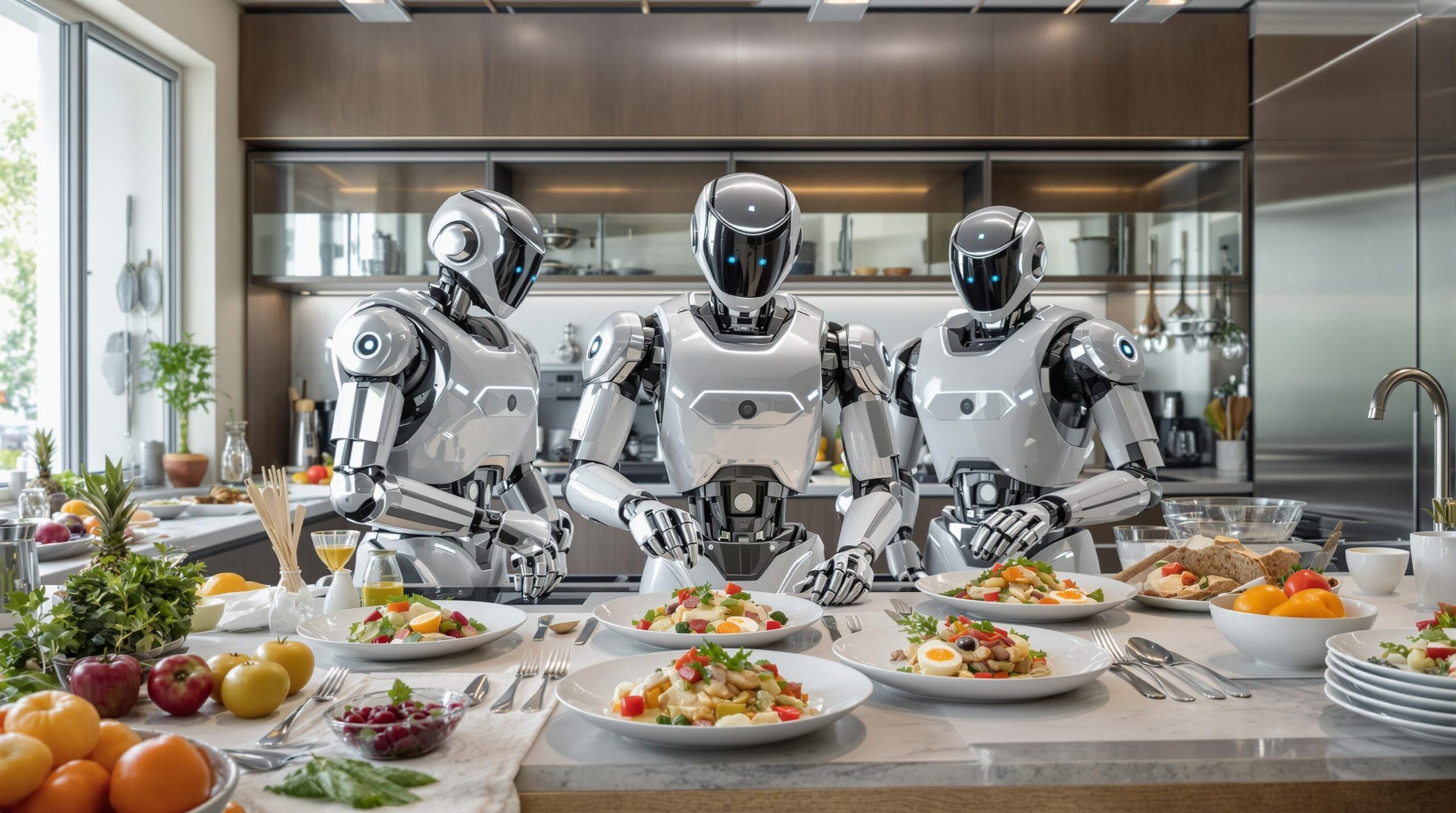Robotic Chefs: Revolutionizing Gourmet Cooking in Seconds
Meals once reserved for skilled human chefs can now be prepared by advanced robots in seconds. This new approach reshapes both professional kitchens and home cooking. Robotic chefs make gourmet dishes more accessible, efficient, and consistent than ever before.
Technological Advances Behind Robotic Chefs
Robotic chefs combine artificial intelligence, machine learning, and precision engineering. These technologies enable robots to execute complex recipes with remarkable speed and accuracy. Sophisticated sensors guide each motion, ensuring exact ingredient measurements, mixing, and heating.
Computer vision systems allow robotic chefs to recognize ingredients as well as monitor their texture and color. This guarantees precise cooking times and ideal levels of doneness. Touch-sensitive tools ensure delicate ingredients like herbs and garnishes remain intact during meal preparation.
How Robotic Chefs Operate
A robotic chef’s work starts with digital recipe databases. Operators select a dish from a touchscreen menu or connected app. Once selected, the robot automatically gathers ingredients, which are preloaded in specially labeled containers.
The robot’s arms and appendages mimic human motion, slicing, dicing, and stirring with exceptional dexterity. Built-in timers and temperature controls facilitate flawless execution. Completed meals are plated attractively, ready for serving.
Speed and Efficiency: Meals in Seconds
Perhaps the most striking feature of robotic chefs is unprecedented speed. Complex dishes, once requiring hours, now appear on plates in a fraction of the time. This is made possible by multitasking robotic arms, rapid heating elements, and real-time monitoring.
Some machines use induction cooking to reach optimal temperatures instantly. Simultaneously, robots chop, stir, and season, with all actions occurring in a precisely orchestrated sequence. The result is gourmet quality with exceptional efficiency.
Consistency at a Gourmet Level
Human chefs, no matter how skilled, are subject to fatigue and error. Robotic chefs eliminate this variability, ensuring every meal meets exact standards. The result is a perfectly cooked steak or delicate soufflé, plate after plate.
Preprogrammed routines and constant calibration sustain high quality even during busy service times. Restaurants utilizing robotic chefs can guarantee the same level of flavor and presentation for hundreds of orders each day.
Creative Potential with Artificial Intelligence
Robotic chefs do not just execute recipes; they can suggest new combinations. Artificial intelligence algorithms analyze ingredient profiles and consumer preferences. These systems recommend creative flavor pairings, sometimes inventing dishes previously unknown.
By learning from data and real-time feedback, machines refine their cooking techniques. This allows continuous adaptation and growth. Over time, robots may even surpass traditional cooking methods in innovation and invention.
Robotic Chefs in Home Kitchens
Tech companies have introduced compact robotic chef appliances for domestic use. These devices transform meal preparation for busy households. With a few taps on a smartphone, anyone can serve restaurant-quality meals at home.
Advancements in voice control and personalization make these appliances intuitive and user-friendly. Smart fridges can suggest dishes based on available groceries. The robotic chef takes over the rest, guaranteeing a quick, delicious meal.
Impact on Professional Kitchens
Commercial kitchens benefit considerably from the integration of robotic chefs. Restaurants can decrease labor needs while increasing output and consistency. This technology frees human chefs to focus on creative aspects, like menu development and garnish artistry.
Hotels, cruise ships, and catering services are among the first to embrace these changes. High-demand environments benefit from robots’ ability to fulfill large orders in record time. As a result, food service businesses can better serve their customers and grow.
Challenges and Limitations
Despite their promise, robotic chefs face several obstacles. Initial costs remain high, which limits entry for many small businesses and households. Maintenance, programming, and cleaning require specialized skills.
Current robots can struggle with highly variable or artisanal dishes that rely on chef intuition. Texture, flavor balance, and presentation may sometimes lack the ‘human touch.’ Ongoing research aims to overcome these hurdles over time.
Ethical and Workforce Considerations
Widespread use of robotic chefs prompts questions about the future of culinary jobs. Automation may impact roles for cooks and food prep workers. However, it also creates new fields in robotics, maintenance, and culinary AI programming.
Some experts envision new opportunities emerging from this technology. Chefs can reorient careers, specializing in recipe design or robotic system oversight. Culinary education may include robotics and engineering components as these tools become commonplace.
Environmental and Health Benefits
Robotic chefs optimize ingredient use, helping reduce food waste. Smart portion control minimizes excess, while precision cooking ensures less spoilage and fewer re-cooked meals. These gains contribute to more sustainable kitchen operations.
Some robots automatically alert users to expiring products or unhealthy patterns. This promotes balanced diets and encourages healthy eating habits. Over time, broader adoption could yield positive impacts on global food systems and public health.
The Future of Robotic Chef Technology
With ongoing research, robotic chefs continue to evolve at a remarkable pace. Engineers are working to make robots more tactile and adaptive. Soon, they may master artisanal baking, specialty cuisines, and highly personalized menus—all in record time.
Integration with other smart home and restaurant systems is likely. Robotic chefs may soon communicate with delivery services, suppliers, and nutrition apps. This ecosystem streamlines every step, from shopping to meal enjoyment.
Conclusion: A Tastier Tomorrow, Faster Than Ever
Robotic chefs represent a pivotal moment in culinary innovation. They blend advanced robotics with creativity, efficiency, and sustainability. By serving gourmet meals in seconds, they redefine dining for both professionals and home cooks.
As technology continues advancing, the possibilities for robotic chefs will only expand. The future of food promises to be quicker, healthier, and more imaginative than ever before.


